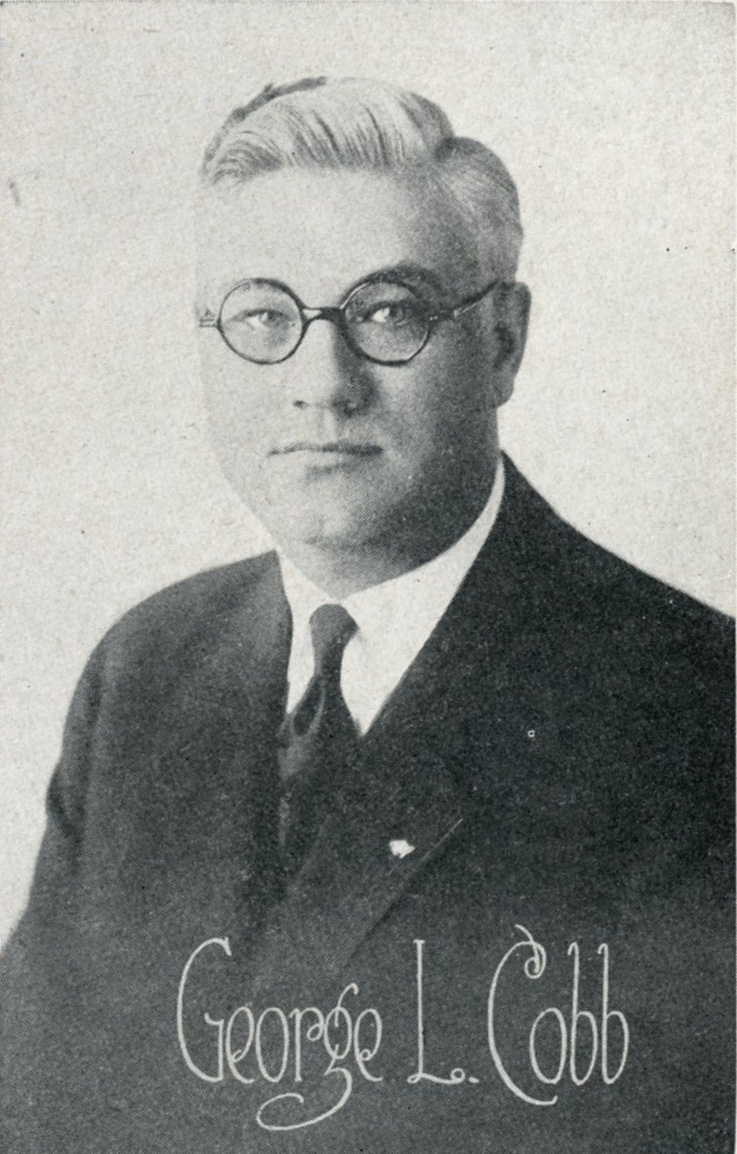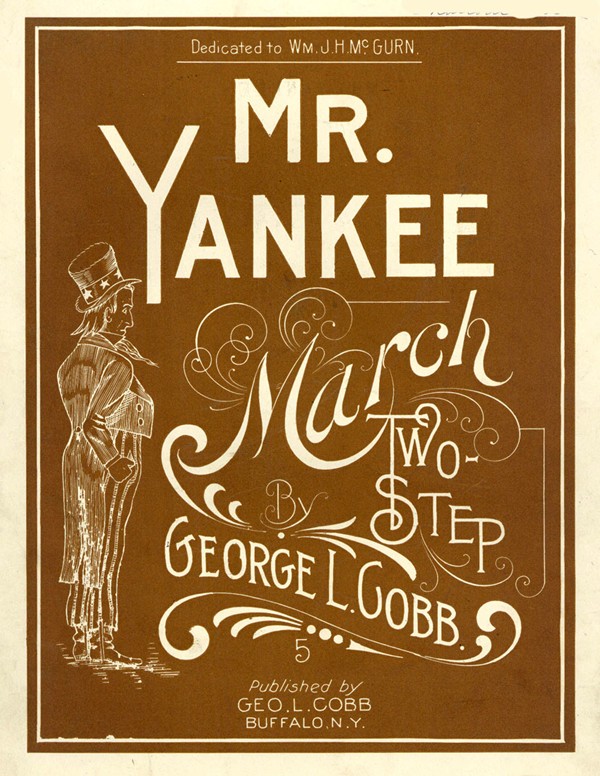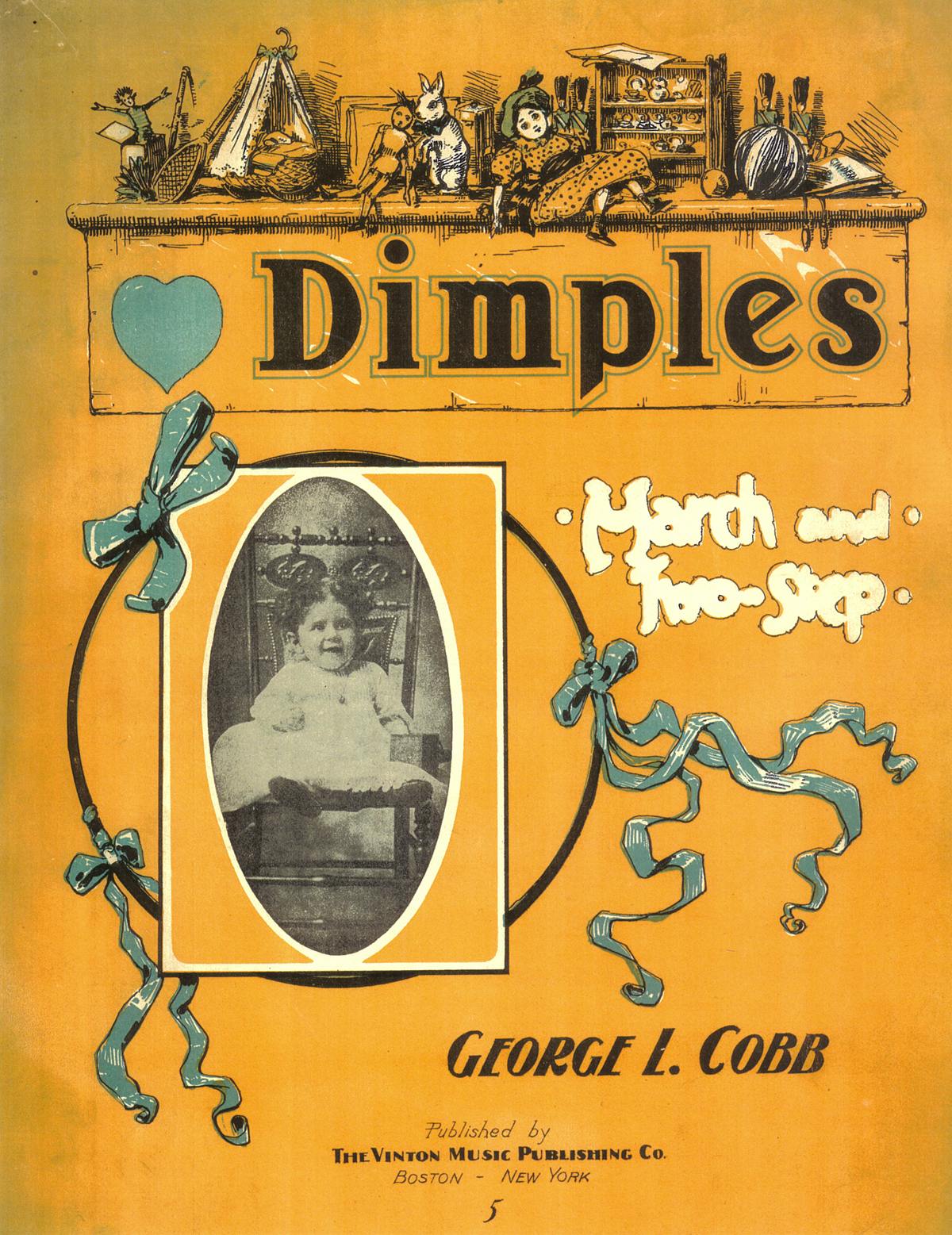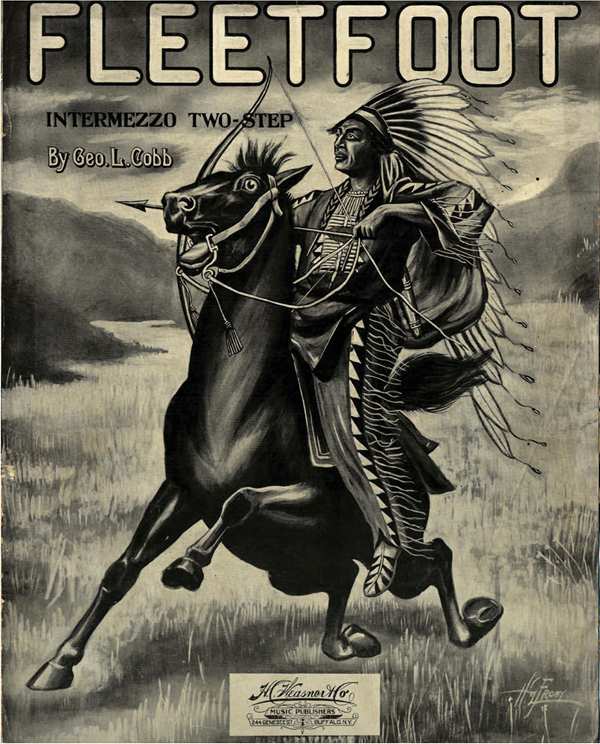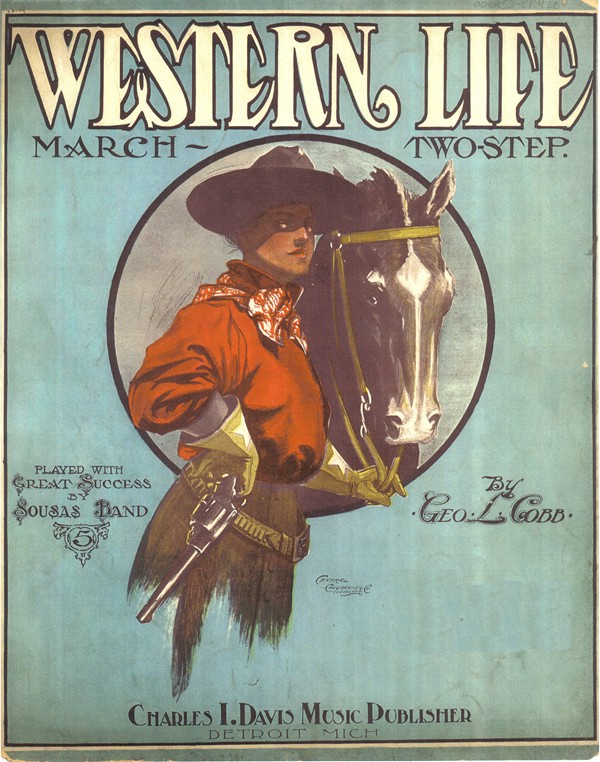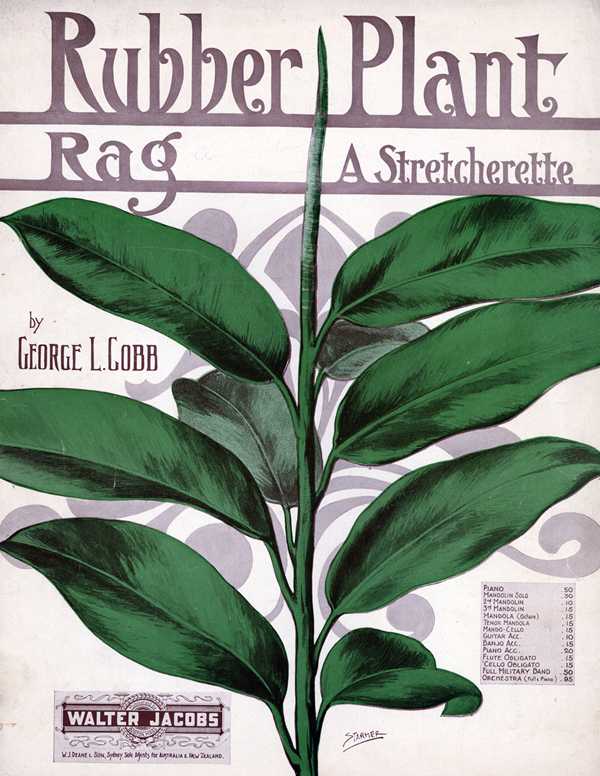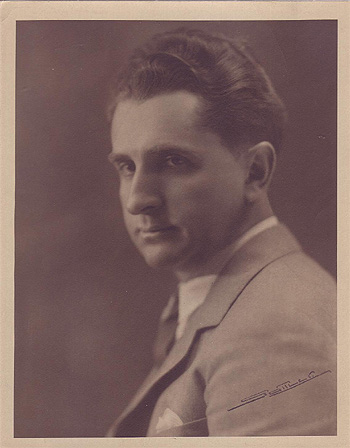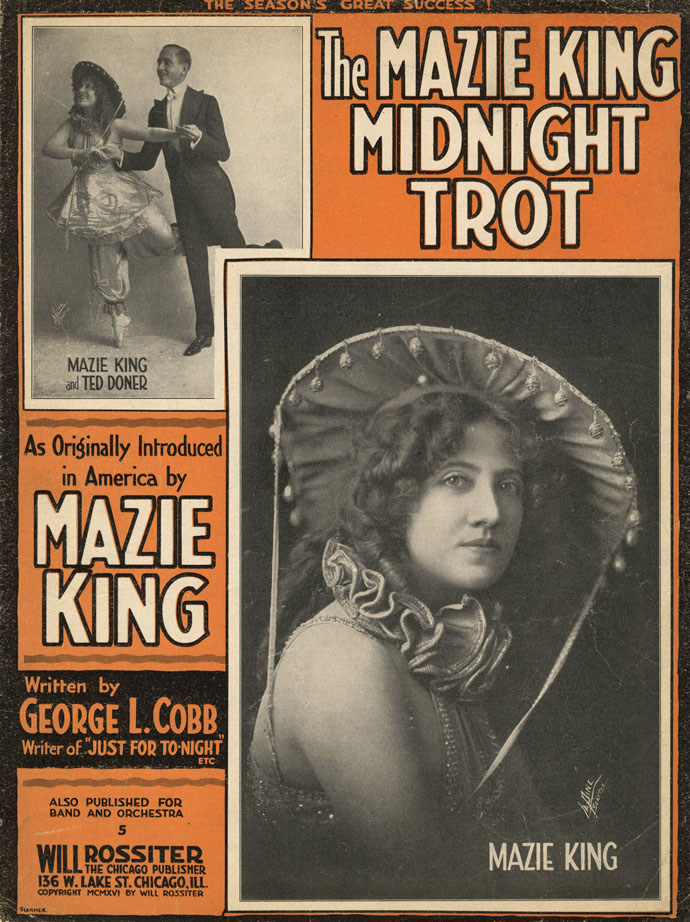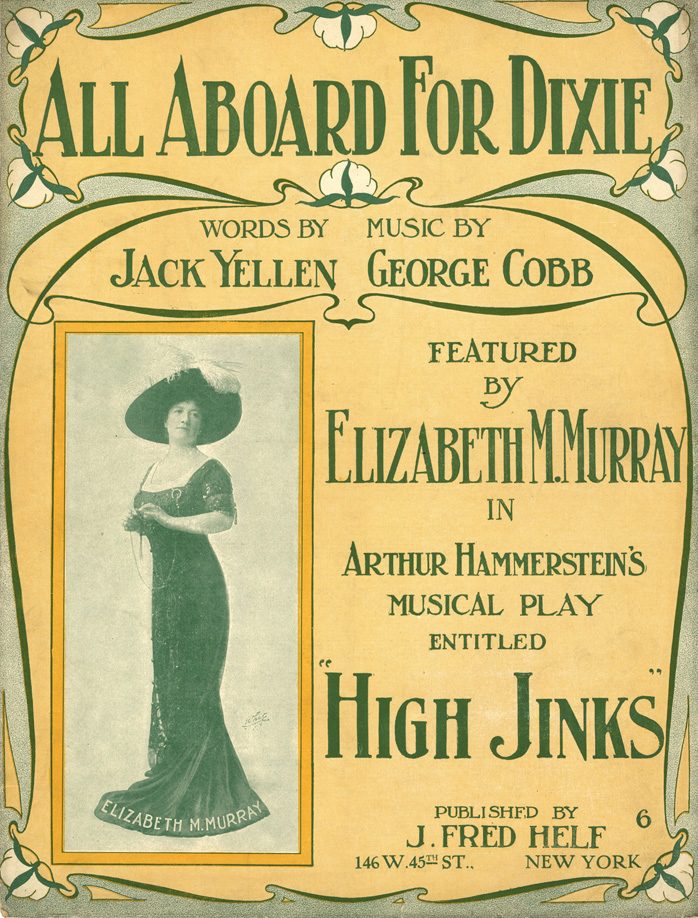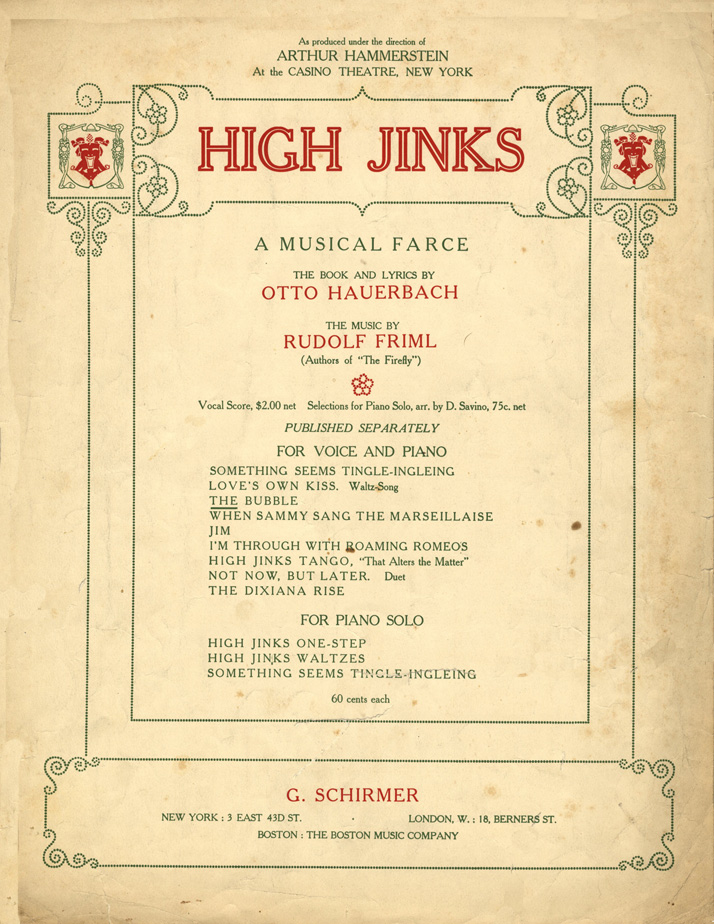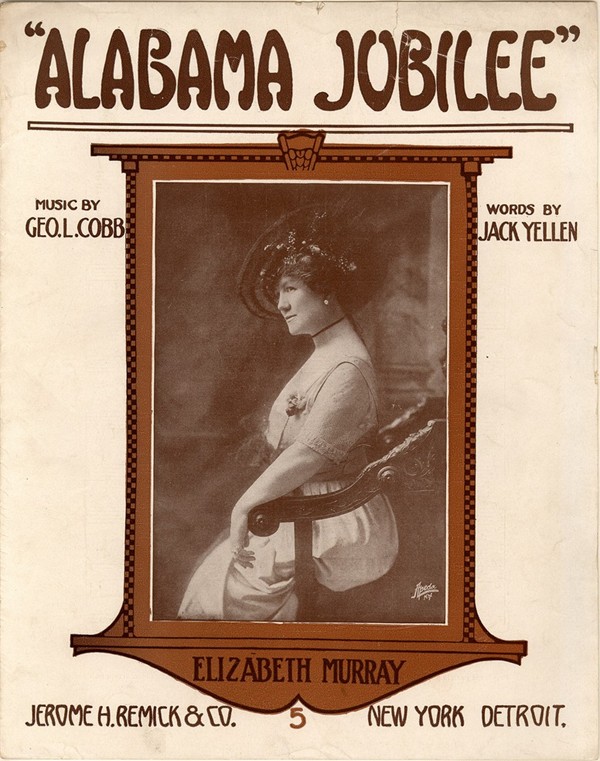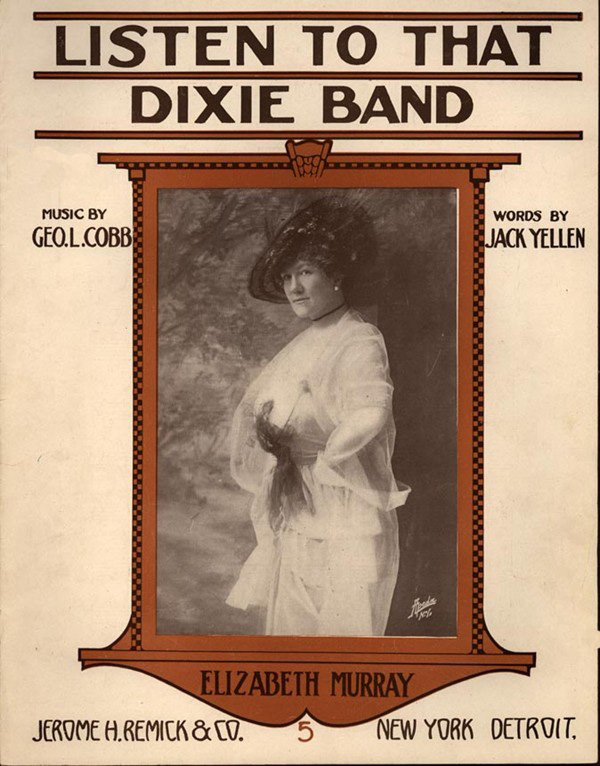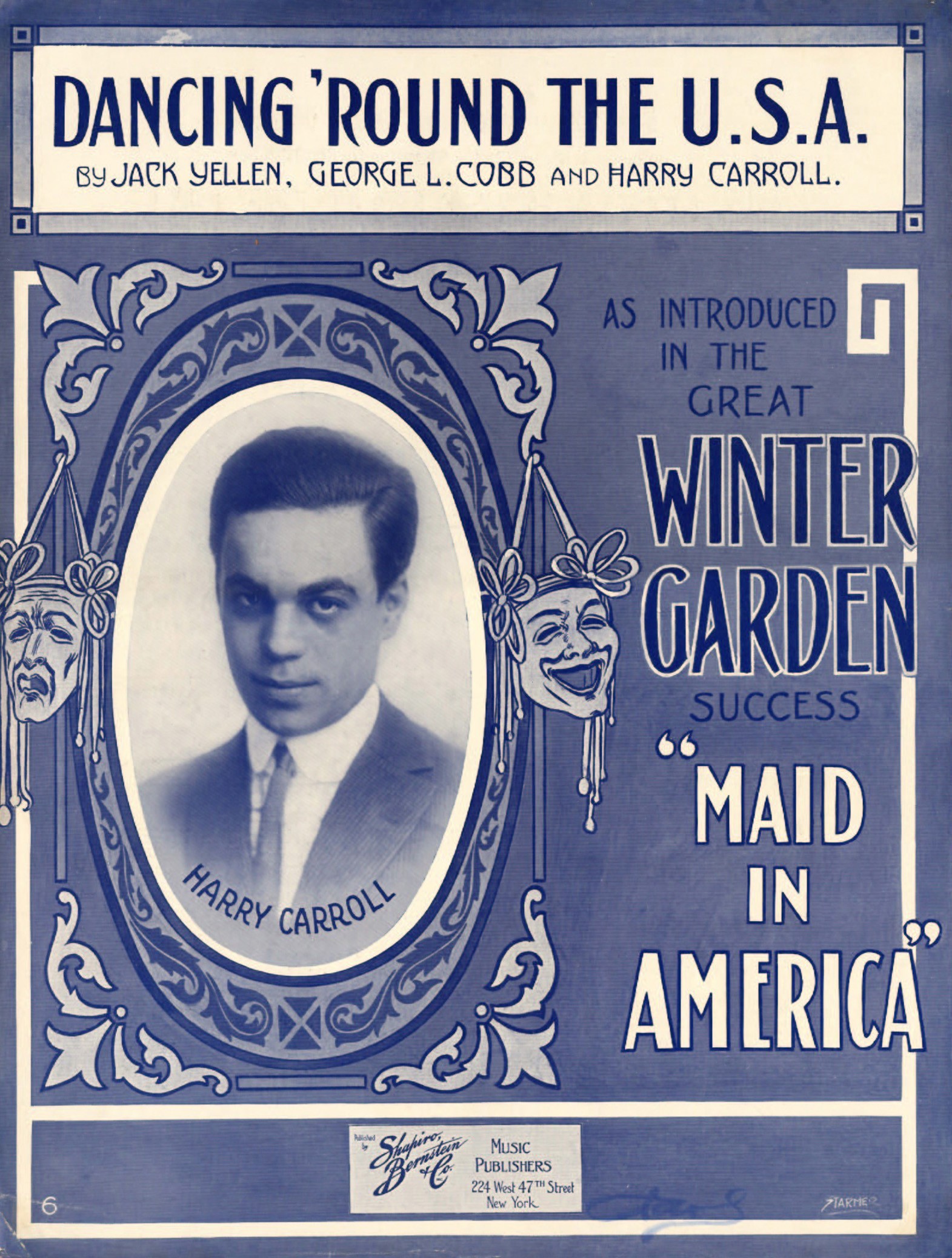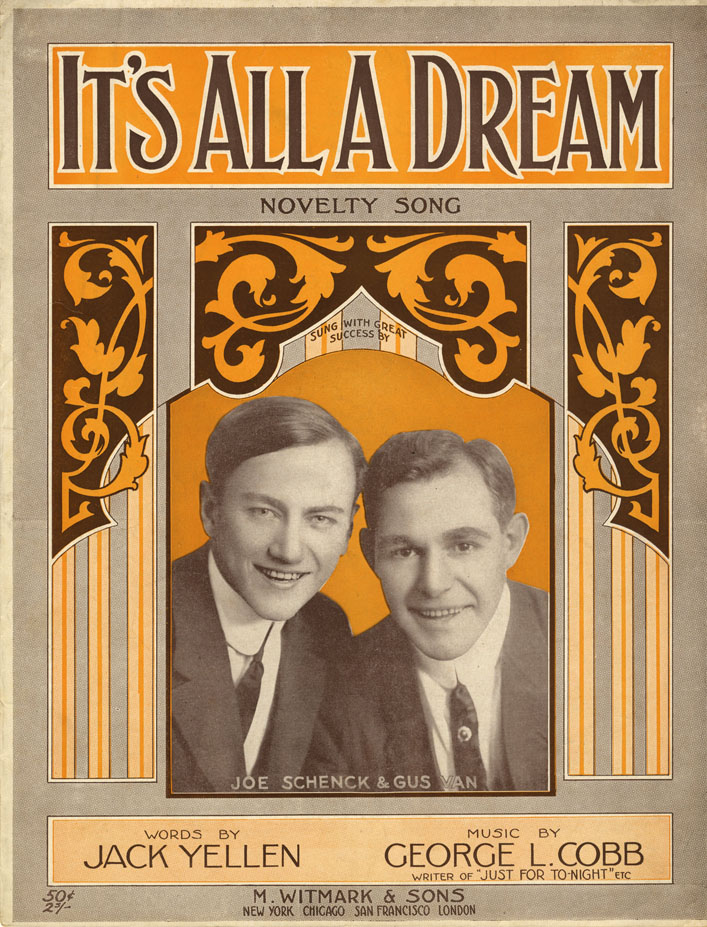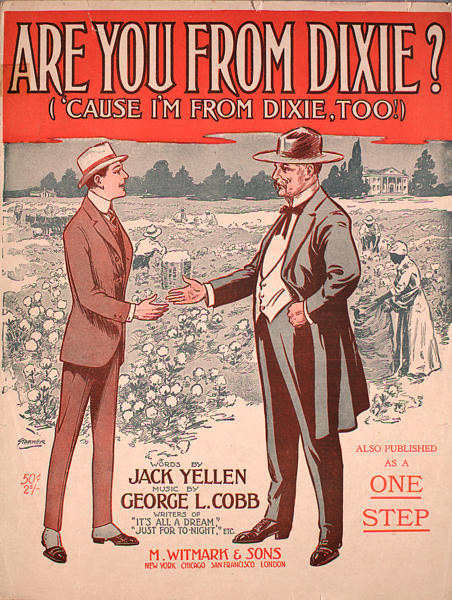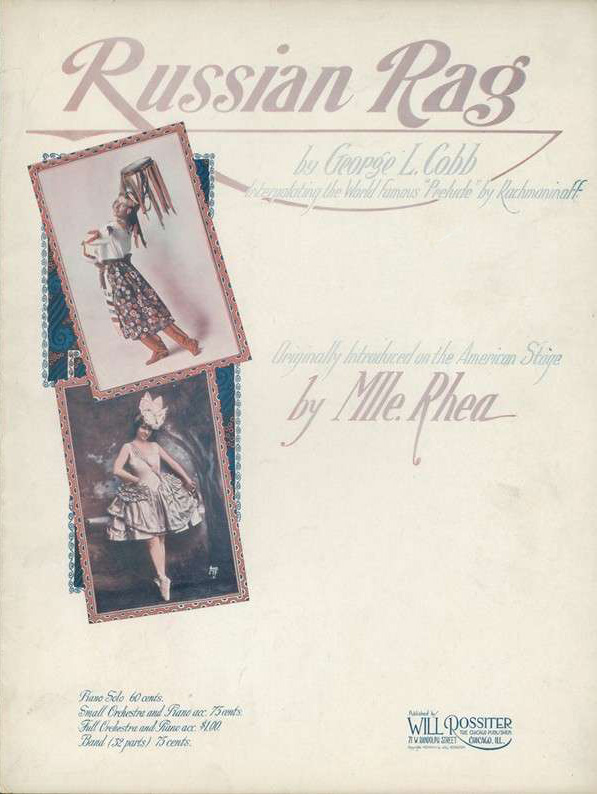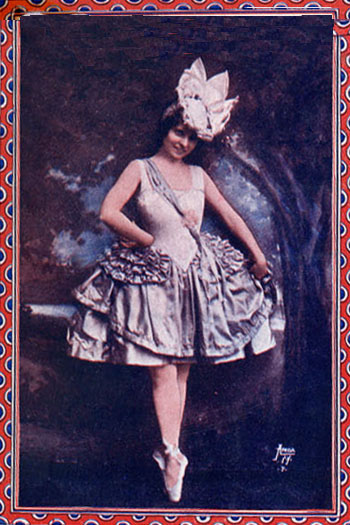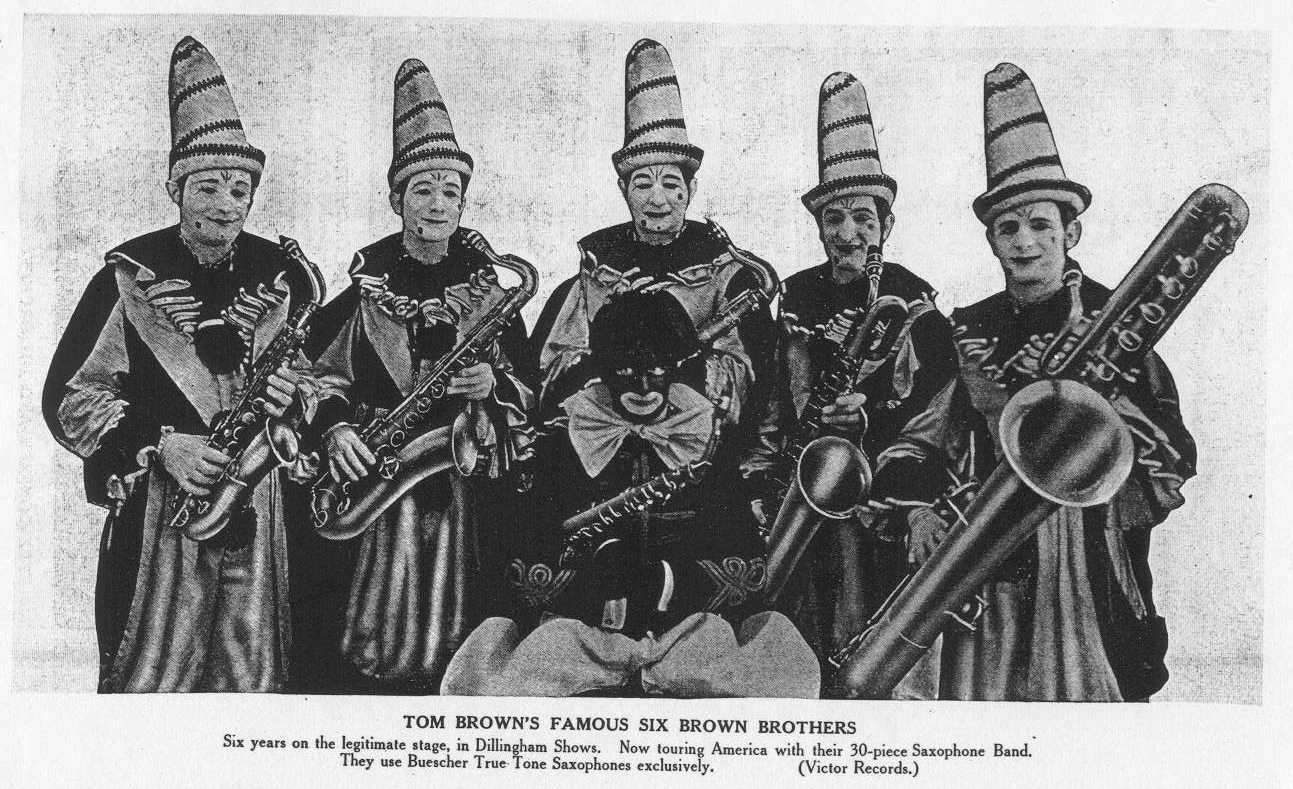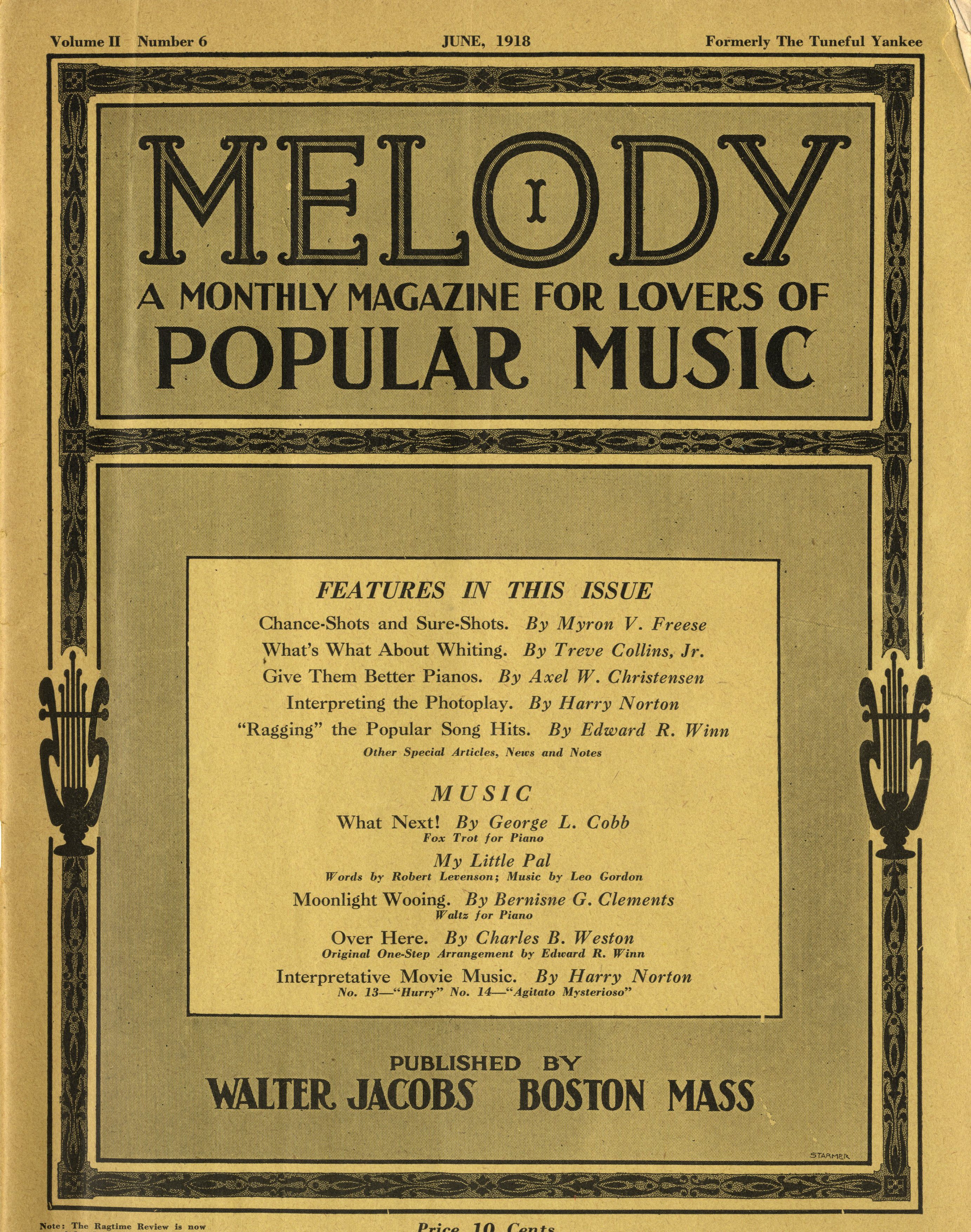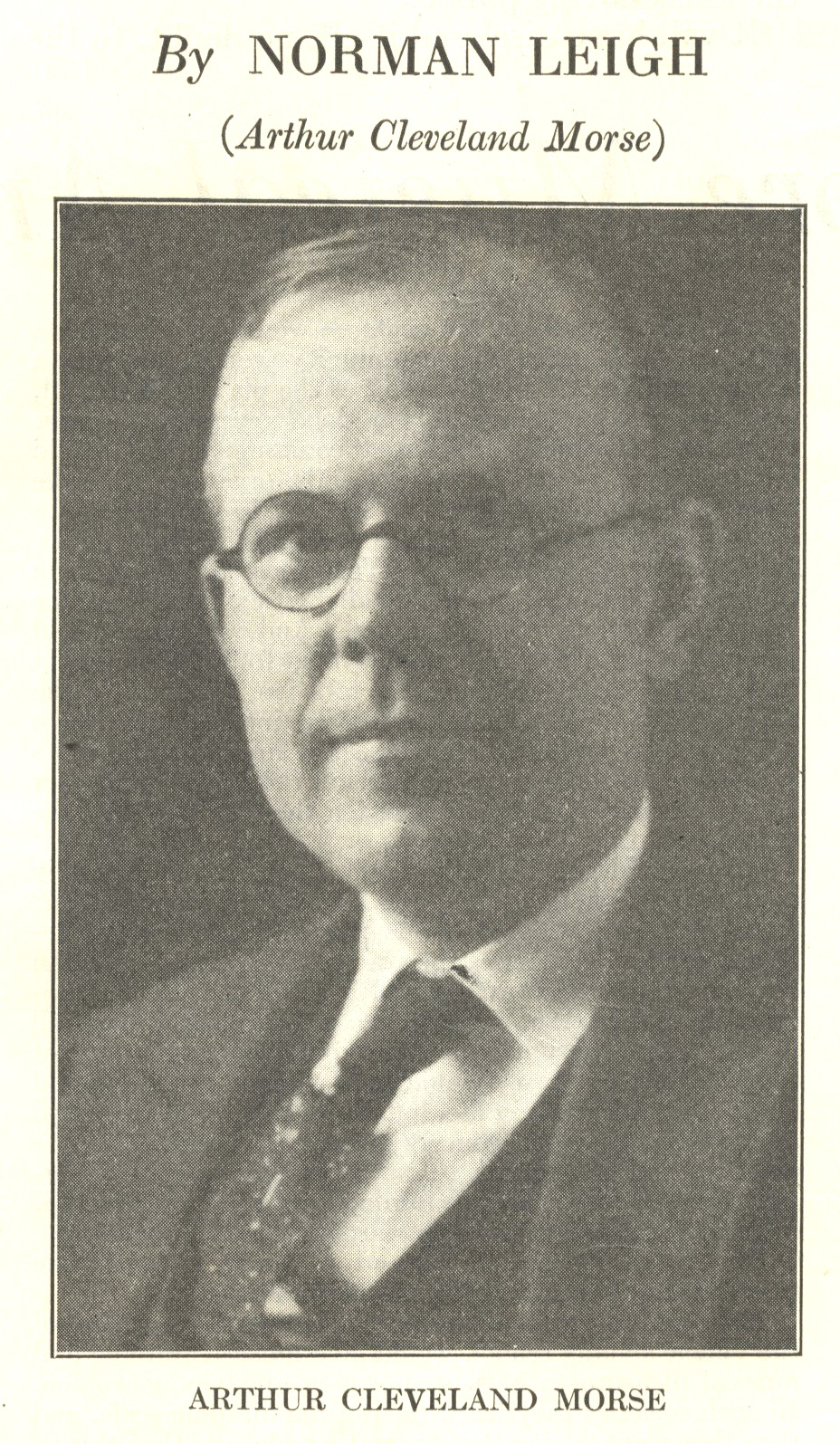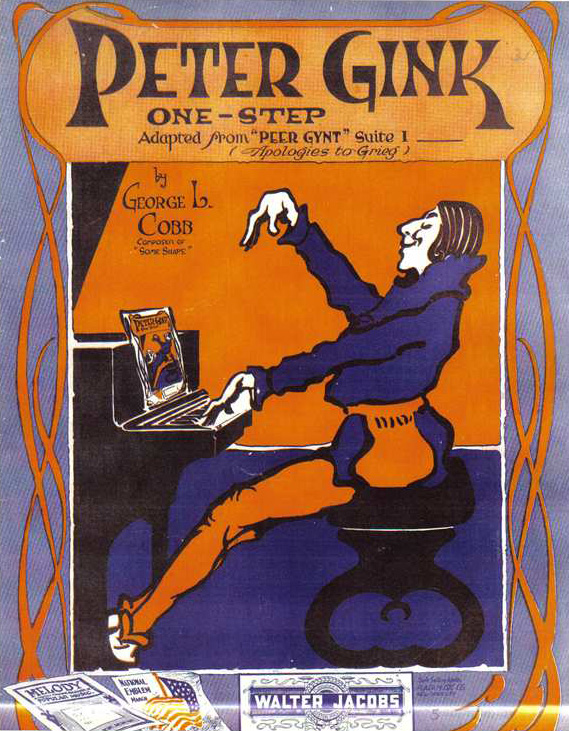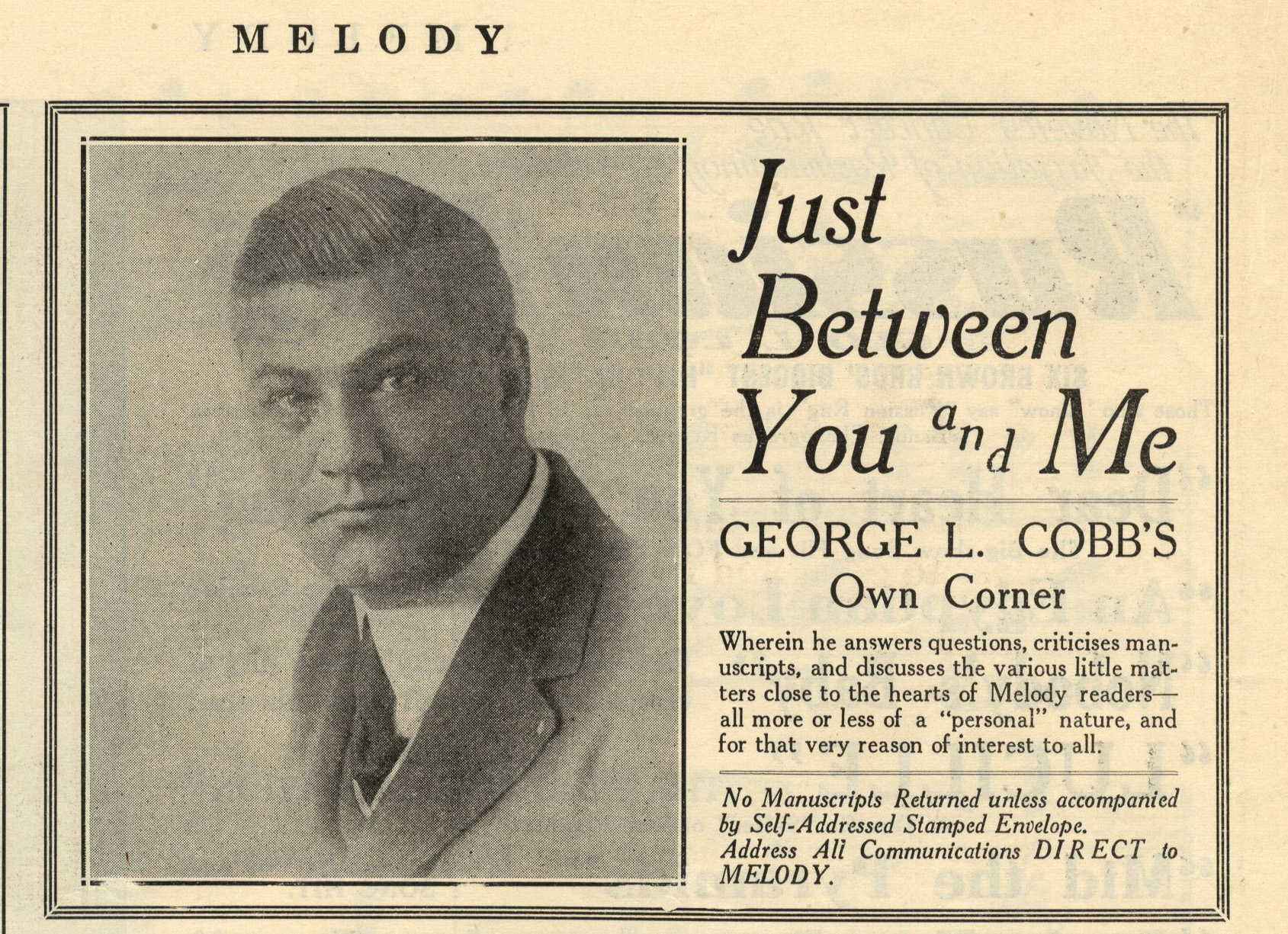 Contact
Contact
|
 Blog for 18 July 2012
George L. Cobb: The Tuneful Yankee By Frederick Hodges
George may have been named for his Uncle George, his mother’s brother. The Twelfth Census of the George’s maternal
grandfather, William Maine was a wealthy farmer,
whose property in 1860 was valued at $5,000.00 and
whose personal wealth was $1,890.00. This made him
the richest man in the town of The Cobb family were also
wealthy farmers. Various branches of the family
lived in and around Starting around 1904, Cobb
attended It was during his time as a
student that Cobb published his very first
compositions. His first piece was a rag entitled
“Mr. Yankee: March and Two-Step” which was issued in
1905 when he was nineteen years old. Cobb dedicated
this rag to J.H. McGurn. In the same year, Cobb
published a delightful little piece entitled
“Dimples — March and Two-Step.” Oddly enough, these
two pieces were copyrighted by a certain W. Hutchins
and published by The Vinton Music Publishing Company
of
In 1906, now aged twenty,
Cobb entered into a publishing relationship with the
H.C. Weasner & Co. firm of
In 1906, he also entered into
a fairly long-term publishing relationship with the
Charles I. Davis music publishing firm of
After college, Cobb lived in
In 1911, Cobb teamed up with
nineteen-year-old lyricist Jack Yellen (
In 1913, Cobb began
publishing pieces for the
All Aboard for
In 1913, Cobb and Yellen
composed the song “All Aboard for
Despite its initial
lackluster presentation, “All Aboard for Among songs specified in a majority of the complaints received are those known as “rags.”[15] In Sheet music sales plummeted without public performance. The most serious problem involved the price at which sheet music was sold. Publishers were also battling with the ten-cent stores, who had discounted sheet music to the point that publishers were failing to earn any profits. Many ten-cent stores were selling sheet music for 5 cents, with hits being sold for only 6 cents.[17] Many publishers were reported to be on the verge of failure.[18] F.A. Mills did eventually go out of business in July 1915.[19] By April 1914, no less than half a dozen music publishing business were expected to fail.[20] One publisher noted that even if the price of sheet music could be raised to ten cents on a yearly sale of only one million copies, the result in additional income would be $40,000 annually.[21] For the industry as a whole, this amount was considerably higher. It was estimated that ten million pieces of sheet music had been sold in the first half of 1914 and that sixty percent of this had been sold at a discount at the ten-cent stores.[22] Of equal concern to the publishers was the practice that had emerged at this time for publishers to pay singers to perform their songs in public. What may have started out as an innocent way of getting songs plugged by popular performers rather than merely by the song plugger in the sheet music store became a major problem for the publishing industry. One publisher complained that it cost $20,000 to exploit a new song with no certainty that it would become a hit.[23] Some singers took the money and never performed the songs.[24] Some publishers even had to buy blocks of seats at the Palace Theatre, filling them with “boosters” whose job it was to applaud vigorously whenever one of the publisher’s songs was performed.[25] Eliminating the practice of paying singers would be estimated to save publishers $400,000 per year.[26] Another problem was that sheet music publishers believed that they were in direct competition with the phonograph companies. One publisher calculated that a record of a song that sold 200,000 copies resulted in a decrease in the sale of 25,000 copies of the sheet music. Only a few years prior to this, a song was a financial success if it sold only 100,000 copies. Now with the discounting of sheet music and the expenses of paying singers to perform the songs, a song need to sell over a million copies before it earned a return on the publisher’s investment.[27] Many prominent sheet music publishers, led by F.A. Mills, refused to allow any of their songs to be recorded on phonograph records. They acknowledged that phonograph records helped popularize a song in the short term, but that in the long term they hastened the song’s demise and killed sheet music sales.[28] To help correct these abuses
of the industry, Wall Street proposed that all the
big publishers should form a huge combine in order
to clean up the industry and make it profitable once
more.[29]
All
of the big publishers, with the exception of Leo
Feist and F.A. Mills,[30]
combined to agree that they would cease the practice
of paying singers.[31]
Obviously every publisher had to agree in order to
keep the playing field even. With the exception of
Feist, all of the major publishers signed an
agreement that they would cease paying singers or be
fined $5,000.[32]
On Additionally, the Publishers and ASCAP combined to force Cabaret orchestras to pay a $10 to $15 yearly royalty for the right to perform songs in public.[34] Naturally, the cabarets were upset by this idea, but publishers felt that they had to recoup their losses and reverse their downward spiral. These licensing fees were expected to generate an annual income of $12,000,000 for the publishers.[35] Despite these changes, sheet music sales were still down by a third in October 1914.[36] In 1913, producer Arthur
Hammerstein was working hard on a new show to be
called High
Jinks.
Operetta composers Rudolf
Friml and Otto Hauerbach were contracted to write
the songs. The story, by Leo Ditrichstein is as
follows: a specialist in nervous affections living
in …has an inimitable way of delivering what is known in the expressive vernacular of the stage as a “coon song” without being a “coon shouter,” and is equally at home in vaudeville as in musical comedy with her renditions of down South darky love songs. Here is one single woman entertainer who did not fall in line with the finger-snapping, shoulder-shrugging, suggestive-moving feminine singers when the contortionists became the style. Miss Murray’s songs are always clean and wholesome.[37] From the very beginning,
there were problems with High Jinks.
It first opened for a trial run on Out of town runs, then as
now, gave producers the valuable opportunity to run
a show before live audiences in order to make all
the necessary changes and improvements prior to a
show’s official opening on Broadway in A reviewer in Variety of
the High Jinks
opened in Best of all, it improves as it goes along, gets livelier and funnier from act to act, and with Elizabeth Murray to sing a rattling good “coon song” toward the end of the proceedings…[42] The “coon song” is clearly
“All Aboard for High Jinks was by all measures a hit and a financial success, and Cobb’s song played no small part in this triumph. The shows’ first Saturday night performance raked in $2,100,[45] which was a box office fortune in 1913. J. Fred Helf, the small-time,
little league publisher of “All Aboard for It is unknown how much Remick
paid to acquire “All Aboard for Unfortunately, High Jinks
ran into serious troubles by the end of December. A
rupture emerged between Elizabeth Murray and the
Arthur Hammerstein. In mid January, High Jinks moved to the Casino Theatre,[49] which is also on Broadway. At this time, it was clear that the rupture between Miss Murray and the management had not been healed. One evening when Miss Murray was walking along Broadway toward the Casino Theatre, she noticed that her name was not illuminated on the marquee. As she drew closer, she discovered to her horror that her name had never been put up on the sign.[50] Needless, to say, she was furious. Nevertheless, the show continued to do record business. After moving to the Casino Theatre, in its fifth week, it made around $10,000 a week, which made it a resounding smash hit.[51] Murmurings in the trade papers about problems behind the scenes continued to plague the show. Certain minor players were fired and replaced.[52] Lyricist Otto Hauerbach paid $10,000 to acquire half interest in the show and begin earning fifty percent of the profits.[53] This was undoubtedly a smart move on his part, since the sheet music sales of his songs in the show could not have been making him much if any money, acquiring half interest in the show enable him to profit indirectly albeit substantially from the ticket selling powers of Cobb’s tune. The biggest change in the
show occurred in early February when the principal
players, including Elizabeth Murray left the show.[54]
Stella Mayhew assumed The Management, however, was
unwilling to let the show die. In early March 1914,
A new marketing gimmick was employed with the hope
of reviving business for the show. High Jinks
would be filmed and shown in cinemas. The Mutual
Film Corporation agreed to film the entire cast
performing “the two numbers which have made the
piece such a success!” These numbers would
undoubtedly have been Cobb and Yellen’s “All Aboard
for As a result of this and perhaps other publicity moves, High Jinks began doing “freak” business, setting numerous box office records. In mid March, it was making $11,500 a week, earning $4,100 alone for the two Saturday performances. The management announced that High Jinks would remain at the Casino indefinitely.[60] In early April, the show was still doing record business. Variety speculated that the “popularity of music in cabarets may have helped business.”[61] In other words, Cobb’s song was bringing the crowds in. At the end of April Arthur Hammerstein was so excited by the enormous profits generated by the show, that he announced that not only would High Jinks remain at the Casino all summer long, two road show versions of the show would be created to tour the Midwest and the Pacific Coast respectively.[62] Troubles in
Sheet Music Publishing By July 1914, the sheet music industry was experiencing tremendous upheavals. Unfortunately, these problems directly affected Cobb. Lawyers for the management of High Jinks published a notice banning anyone anywhere from performing any song from High Jinks.[63] As a result, the only way for the public to hear Cobb’s tune would be to buy a ticket to the show. Although this was bad news, the touring company version of the show was doing record business even a year later,[64] and Remick continued to market the sheet music. It’s All A
Dream George L. Cobb was now a
successful Publishers were no better than the average Tin Pan Alley composer. Joseph W. Stern & Co were suing T.B. Harms over the rights to publish the music to The Doll Girl and Queen of the Movies.[66] Remicks was suing Joseph W. Stern over the rights to publish the interpolated numbers in The Midnight Girl.[67] M. Witmarks was suing composer Harold Atteridge for daring to violate his contract and publish the song “The Honeymoon Express” with Jerome Schwartz Co.[68] Shapiro, Bernstein & Co sued the Vaudeville team of George Whiting and Sadie Burt to stop them from singing “The War in Snider’s Grocery Store,” saying that the only performer authorized to sing the song was the act of Cross and Josephine.[69] M. Witmark & Songs sued composer William F. Peters for publishing a song with Harms.[70] Joseph W. Stern sued Sigmund Romberg to prevent him from publishing any of his songs with any other publisher, even though Stern was refusing to publish any of Romberg’s songs.[71] Composer Jimmie Monaco sued Harry Von Tilzer for $5,000 additional royalties on the sale of “Row, Row, Row.”[72] Obviously, the song writing business was dangerous. Cobb and Yellen did not
simply sit back. They wisely attempt to capitalize
on the success of “All Aboard for
Murray and Cobb evidently
formed some sort of business partnership at this
time, as is clear from the copyright registration
for the next Yellen and Cobb hit that she helped
make a huge success, “Listen To That Dixie Band.”
In many ways, Cobb had
greater success with “Alabama Jubilee” and “Listen
To That Dixie Band” than with “All Aboard for There were additional outlets
for Cobb’s songs that helped to popularize them and
sell sheet music. Starting in January 1916, I began
a survey of the leading cabaret orchestras in In this same year, Cobb and
Yellen’s song “Dancing ‘Round the U.S.A.” was
interpolated into the Winter Garden Theater
production of Maid
In America. With the star rising in the
publishing world, thanks to the large sales for
Remick of “All Aboard for
The details of his personal
life at this time are scant, but his military
registration card, dating from about 1916 and filled
out when he was thirty years old, reveals that he
was married to a woman named Claire Bailey. The
coupled lived with George’s parents at Russian Rag
Cobb is best known today for
his novelty ragtime piano compositions. Among them
was his 1918 “Russian Rag,” a ragtime version of the
main theme from Rachmaninoff’s Prelude in C-Sharp
Minor, published by Will Rossiter in Despite these recordings, the
public was first introduced to the “Russian Rag” on
the Vaudeville stage by a dancer named Mlle. Rhea,
who premiered the piece at the Majestic Theatre in
Chicago on 12 May 1918,[82]
staying there a week before moving on to other
Vaudeville houses throughout the country. Mlle
Rhea’s act consisted of four songs in four different
costumes to which she danced to the violin and piano
accompaniment of a young pianist named Joseph Mach,
Jr. The third dance was to “The Russian Rag,” which
she performed as a toe dance.
Given the unfavorable description printed in Variety, it is astonishing that the piece sold any copies of sheet music. The music itself was not criticized, but rather the performance was singled out as amateurish. The reviewer wrote of Mach’s playing: Mach is apparently useless. He plays the violin no better than any orchestra violinist, and the piano with average ability. He weakens the little lady’s act more than she, in her inexperience, can realize.[83] Understandably, given the
poor piano playing of Mach, the piece did not
impress the public or sell very well. It was not
until the following year that the Russian Rag
gained popularity, and this was due entirely to its
performance by the Six Brown Brothers Saxophone
sextet on Broadway in Ziegfeld’s Midnight
Frolic, which was not a Broadway show, but
really a cabaret with Vaudeville acts. Although it
was uncharacteristic for Will Rossiter to advertise
its songs in Variety,
they did in fact take out a large ad for the piece
on
While the Six Brown Brothers may have popularized the song on Broadway and in Vaudeville, they never recorded it. The Victor record advertised on the 1920s edition of the sheet music for the “Russian Rag” was not the Six Brown Brothers but an accordion solo by Pietro Diero (Victor 18743). Walter Jacobs By the mid ‘teens, Cobb had
joined the
Wm. Baines Gomer Bath C.
Fred'k H.J. Crosby P. Hans Flath Chas. Frank Gerald Frazee James L. Fulton Leo Gordon P.B. Metcalf E. Mutchler Earnest Smith Al. Stevens Elizabeth Strong Frank Wegman Oswald B. Wilson Carl Paige Wood Stylistically, these pieces
all bear Cobb’s stamp, especially those credited to
Leo Gordon. Jacobs had only Cobb, Norman Leigh, and
R.E. Hildreth on his staff, so it is likely that
some of the pieces published under these names were
by either Leigh or Hildreth. Leigh (Arthur Cleveland
Morse) even wrote an article in Melody
revealing the company-wide ruse and indicating that
he too used a great number of pseudonyms when
publishing for Jacobs, including pseuydonymous
women's names.
While the “Russian Rag” was Cobb’s most famous publication, it was another composition that brought him infamy. In 1918, the same year he published the Russian Rag, Jacob’s published Cobb’s ragtime parody of Grieg’s “Peer Gynt Suite,” entitled, “Peer Gink – One Step,” which was published separately as sheet music as well as in Melody[88] and Jacob’s Band Monthly. “Peer Gink” followed the same formula as the “Russian Rag,” being a distillation of the essential melody and harmony lines of the best known melodies from the “Peer Gynt Suite,” cleverly arranged into standard ragtime structure.
On While no objections to the “Russian Rag” seem ever to have been voiced or published, the popularization of “Peer Gink” by the Six Brown Brothers, who recorded it for Victor on 13 May 1919 (Victor 18562),[90] led to a storm of protest. A high-brow critic in the Brooklyn Eagle sniffed that Peer Gink “will be resented by millions of the lovers of Grieg’s music in this country only less strongly than by the Norwegians.” The critic advised Cobb and his ilk: Ragtime is well enough in its place, stirring, amusing, and inspiring to dance by. But there are tunes enough that can be ‘ragged.’ Those ‘composers’ whose long suit is syncopation should at least respect masterpieces in their search for material. There is no need for them to kill the love of better music in order to find their own fun and their own royalties.[91] This review was slavishly reprinted in full in the popular high-class magazine The Literary Digest.[92] In September 1920, Melody also printed a letter that Walter Jacobs had received from a self-appointed music highbrow who found it “disgraceful…the way beautiful music is being converted into vulgar, impossible jazz.. When Grieg’s immortal “Peer Gynt” is printed on a program “Peter Gink” it is time for all music lovers to rebel against this outrageous profanity.”[93] The editor of the magazine, Gregory M. Mazer, naturally defended Cobb’s piece. These criticisms did not seem to bother Cobb. Indeed, they seem to have encouraged him to do more. For the next few years, Cobb composed a steady stream of witty ragtime versions of the very classical pieces most highly cherished by high-brow haters of popular music, such as “Bohunkus,” a parody of themes by Dvořak,[94] “Shivaree,” a parody and pastiche of Schubert’s “Ave Maria” and themes by Moszkowski,[95] and “Summer Furs,” a novelty piano version of Cecile Chaminade’s “Scarf Dance.”[96] Starting in February 1918,
Cobb began writing a column for Jacob’s music
magazine Melody,
entitled “Just Between You and Me” in which he
answered readers’ questions about composing and
marketing popular songs, as well as critiquing their
musical submissions.
I cannot answer all of your questions – why don’t you buy an Encyclopedia Britannica? Yes, I can do other things besides write songs –I can ride a bicycle and blow smoke rings. I am not bald-headed, but I would be if very many correspondents sent in questions like yours.[97] Among Cobb’s funniest commentaries are these: You
must be a lover of canned milk or else a stockholder
in the “Carnation Milk Co.” when you go to the
trouble to write and shoot in a song entitled
“Contented Cows.” Your words are idiotic and inane.
Your punch in the chorus reaches the height of
putrid nonsense. Sorry I can’t repeat it here and
let MELODY readers see what nuts there are in this
great He also once wrote: I
hate like thunder to shatter your fond yet wild
dreams, but your fox-trot “Melody” written
especially for and dedicated to MELODY is as devoid
of melody as According to the Fourteenth
Census of the In 1930, he was living alone
with his eighty-two-year-old mother, Jeanette, in a
rented house in Cobb was an active Mason and
held the position of secretary of the Chamber of
Commerce of Brookline and [1]
The 1890 Census lists Linus B. Cobb’s occupation
as “real estate agent.” Twelfth Census of the [2]
In 1890 the Mexico Electric Light, Heat and
Power Company was organized, and early in 1891
an adequate electric light system was placed in
operation. It is controlled by Edwin L.
Huntington, Linus B. Cobb, and Charles E.
Hocknel. 1895 Landmark's of [3]
1895 Landmark's of [4]
1860 Census of the [5]
His land was valued at $5,200.00. Only the land
of his neighbor Isaac Turney was valued higher,
at $6,000.00. 1870 Census of the [6]
1870 Census of the [7]
1860 Census of the [8] Witness such pieces as: “Song of the Robin: Reverie.” by J. Henry Ellis. Copyright 1906 by The Vinton Music Co. “When The Sun Sets In The West: A Rustic Ballad.” Written and Composed by Frederick H. Groves. Copyright 1905 by by The Vinton Music Co. "Teddy's Nig."
Written by Ethelberta Twombly. Copyright 1910 by
The Vinton Music Pub. Co, "When It's
Twilight Neath The Old New England Hills."
Lyrics by Arthur E. Bucknam. Music by Jacob
Henry Ellis. Copyright 1915 by the Vinton Music
Pub. [9]
An advertisement for Fleetwood with this
information is found in the following piece.
“Idylia: Novelette-Intermezzo.” By George L.
Cobb. Copyright 1907 by H. C. Weasner & Co.
According to the stamp on the sheet music
deposited with the Library of Congress, “Idylia”
was entered for copyright on [10]
“I'd Like To Take A Chance With You”. Lyrics by
Jack Yellen. Music by George L. Cobb. Copyright
1911 by Charles I. Davis Music Publisher, [11] “Some of These Days.” Music and Lyrics by Shelton Brooks. Copyright 1910 by Will Rossiter. [12]
David A. Jasen and Trebor Jay Tichenor. Rags and
Ragtime: A Musical History. [13] “Waiting For The Robert E. Lee.” Lyrics by L. Wolfe Gilbert. Music by Lewis F. Muir. Copyright 1912 by F.A. Mills. [14]
“Snyder’s Songs Hard Hit.” Variety,
vol. 31, non. 12 ( [15] “Police After ‘Blue’ Songs: Want Risqué Lyrics Censored.” Variety, vol. 32, no. 3 (September 19, 1913): p. 8. [16]
“ [17] “Music Business Serious.” Variety, vol. 32, no. 10 (November 7, 1913): p. 8. [18] “Publishers Still Compalin.” Variety, vol. 32, no. 2 (September 12, 1913): p. 5. [19] “Mills In Gloom.” Variety, vol. 39, no. 5 (July 2, 1915): p. 5. [20] “Song Publishers in Bad: Failures Expected Shortly.” Variety, vol. 34, no. 7 (April 17, 1914): p. 7. [21] “Precarious Music Publishing May Be Followed By Reforms.” Variety, volo. 33, no. 6 (January 9, 1914): p. 7. [22] “Music Publishers’ Meeting For Protective Purposes.” Variety, vol. 35, no. 3 (June 19, 1914): p. 6. [23] “Precarious Music Publishing May Be Followed By Reforms.” Variety, volo. 33, no. 6 (January 9, 1914): p. 7. [24] “’Paid Singers’ Don’t Sing.” Variety, vol. 32, no. 5 (October 3, 1913): p. 6. [25] “Where ‘Boosters’ Come From and Some of Their Ways.” Variety, vol. 32, no. 11 (November 14, 1913): p. 8. [26] “Music Publishers’ Combine Working Out Satisfactorily.” Variety, 35, no. 8 (July 24, 1914): p. 6. [27] “Music Publishing Combine Proposed By Wall Street.” Variety, vol. 32, no. 13 (November 28, 1913): p. 3. [28] “Publishers Still Meeting.” Variety, vol. 35, no. 6 (July 10, 1913): p. 7. [29] “Music Publishing Combine Proposed By Wall Street.” Variety, vol. 32, no. 13 (November 28, 1913): p. 3. [30] “Singers of Songs.” Variety, vol. 36, no. 1 (September 4, 1914): p. 22. [31] “Music Publishers’ Meeting For Protective Purposes.” Variety, vol. 35, no. 3 (June 19, 1914): p. 6. [32] “Music Men All Set.” Variety, vol. 35, no. 5 (July 3, 1914): p. 6. [33] “Singers of Songs.” Variety, vol. 36, no. 1 (September 4, 1914): p. 22. [34] “Publishers and Cabarets Bounding Toward A Clinch.” Variety, vol. 36, no. 5 (October 3, 1914): p. 10. [35] “60,000 Places Affected by ‘Cabaret Royalty’.” Variety, vol. 36, no. 6 (October 10, 1914): p. 5. [36] “Music Publishers’ Plaint.” Variety, vol. 36, no. 12 (November 21, 1914): p. 5. [37] Nellie Revell. “The World of Vaudeville.” The Theatre Magazine. vol. 19, no. 159 (May 1914): pp. 237-238, 258-259. [here, p. 238]. [38] “Fixing ‘High Jinks’.” Variety, vol. 32, no. 10 (November 7, 1913): p. 11. [39] “’High Jinks’ Gets Over.” Variety, vol. 33, no. 3 (December 19, 1913): p. 12. [40]
Wynn. “High Jinks,” Variety,
vol. 32, non. 13 ( [41]
The Lyric was
initially to have been leased to composer
Reginald DeKoven as home to his The Lyric remained
a movie house into the 90s (by which time it was
in poor shape) until in 1996, after its
remaining architectural elements were removed,
it joined the neighboring Apollo Theatre in
being razed, replaced by the Ford Center for the
Performing Arts, which fragments of both the
Lyric and Apollo were reused in. Both 42nd and Some of the information here was found in the books "Lost Broadway Theatres" by Nicholas Van Hoogstraten and "Broadway Theatres" by William Morrison. http://cinematreasures.org/theater/9930/ [42] “’High Jinks’ Brings Good Cheer to Lyric.” The New York Times, vol. 63, no. 20,410 (Thursday, December 11, 1913): p. 11. [43] Mark. “High Jinks.” Variety, vol. 33, no. 2 (December 12, 1913): p. 22. [44] Plain Mary. “All For the Ladies.” Variety, vol. 33, no. 3 (December 19, 1913): p. 15. [45] “’High Jinks’ Gets Over.” Variety, vol. 33, no. 3 (December 19, 1913): p. 12. [46] “Remick’s Buys Boston Song.” Variety, vol. 34, no. 7 (April 17, 1914): p. 6. [47] “The Best Seller.” Variety, vol. 34, no. 6 (April 10, 1914): p. 8. [48]
“Miss Murray Sticks.” Variety,
vol. 33, no. 4 ( [49]
1404 Broadway (W. 39th), [50] “’Light’ Trouble in ‘Jinks’.” Variety, vol. 33, no. 7 (January 16, 1914): p. 11. [51]
“Shows at the Box Office in [52] “’High Jinks’ Will Stay.” Variety, vol. 33, no. 8 (January 23, 1914): p. 21. [53] “’Light’ Trouble in ‘Jinks’.” Variety, vol. 33, no. 7 (January 16, 1914): p. 11. [54] “Changes in ‘High Jinks’.” Variety, vol. 33, no. 10 (February 6, 1914): p. 3. [55] “Company Must Move Around.” Variety, vol. 33, no. 12 (February 20, 1914): p. 12. [56] Nellie Revell. “The World of Vaudeville.” The Theatre Magazine. vol. 19, no. 159 (May 1914): pp. 237-238, 258-259. [here, p. 238]. [57]
[58]
“Shows at the Box Office in [59] “High Jinks!” advertisement. Variety, vol. 34, no. 2 (March 13, 1914): p. 25. [60] “’High Jinks’ Freak Business.” Variety, vol. 34, no. 3 (March 20, 1914): p. 11. [61]
“Shows at the Box Office in Lent in [62] “’High Jinks’ All Summer?” Variety, vol. 34, no. 8 (April 24, 1914): p. 16. [63] “Warning!” notice. Variety, vol. 35, no. 7 (July 17, 1914): p. 20. [64] “’High Jinks’ at Cort.” Variety, vol. 38, no. 9 (April 30, 1915): p. 3. [65] “Gilbert Hits Muir.” Variety, vol. 31, no. 12 (August 22, 1913): p. 6. [66] “Stern & Co. Suits.” Variety, vol. 33, no. 9 (January 30, 1914): p. 12. [67]
“Stern Can’t Publish.” Variety, vol. 34, no. 6 ( [68] “Witmarks and Atteridge.” Variety, vol. 35, no. 32 (June 12, 1914): p. 11. [69] “Song Restriction.” Variety, vol. 36, no. 9 (October 31, 1914): p. 7. [70] “Music Publishers’ Contracts Declared Invalid by Courts.” Variety, vol. 36, no. 11 (November 14, 1914): p. 5. [71] “The Publishers Side.” Variety, vol. 36, no. 13 (November 28, 1914): p. 5. [72] “Composer Wants $5,000.” Variety, vol. 37, no. 12 (February 20, 1915): p. 6. [73] Advertisement for Jerome H. Remick & Co. Variety, vol. 38, no. 4 (March 26, 1915): p. 31. [74]
Ashton Stevens. “braving the Heat to See
Elizabeth.” [75]
Wynn. Palace. Variety, vol. 40, no. 6 ( [76] Ad. “Vaudeville Stars with Jerome H. Remick & Co.’s Songs.” Variety, vol. 40, no. 8 (October 22, 1915): p. 35. [77] “Cabarets.” Variety, vol. 41, no. 6 (January 7,, 1916): p. 13. [78] “Cabarets.” Variety, vol. 41, no. 12 (February 18, 1916): p. 13. [79] Registration Card for George Linus Cobb. Registration card number 130. Order no. 1191. Registrar’s report 20-5-8.A [80]
David A. Jasen and Trebor Jay Tichenor. Rags and
Ragtime: A Musical History. [81] Zema Randale. Mutilation Rag. Copyright 1915 by Cable Company. [82] Ad for the Majestic. Chicago Tribune, vol. 77, no. 19 (May 12, 1918): part 7, page 2. [83] Lait. “New Acts: Mlle. Rhea.” Variety, vol. 50, no. 12 (May 17, 1918): p. 23. [84] Ad for Russian Rag. Variety, vol. 55, no. 5 (June 27, 1919): p. 34. [85]
[86] Sime. “Tip-Top.” Variety, vol. 60, no. 7 (October 8, 1920): p. 17. [87] “Broadway Shows.” Variety, vol. 60, no. 9 (October 22, 1920): p. 15. [88] George L. Cobb. “Peter Gink.” Melody, vol. 2, no. 9 (September 1918): pp. 9-11. [89] George L. Cobb. “Just Between You And Me.” Melody, vol. 3, no. 10 (October 1919): pp. 22-24. [here, p. 22.] [90] The Six Brown Brothers also recorded it for Emerson (1055) in July 1919. [91]
[92] “Resenting Grieg in Ragtime.” The Literary Digest, vol. 67, no. 11 (December 11, 1920): p. 37. [93] Gregory M. Mazer. Editorial. Melody, vol. 4, no. 9 (September 1920): p. ? [94] George L. Cobb.” Bohunkus: Novelty One-step for Piano.” Melody, vol. 4, no. 3 (March 1920): pp. 9-11. [95] George L. Cobb. “Shivaree: One-Step.” Melody, vol. 5, no. 10 (October 1921): pp. 18-20. [96]
George L. Cobb. Summer Furs: A Syncopated
Classic.” Copyright 1924 by Walter Jacobs, Inc.,
[97] George L. Cobb. “Just Between You And Me.” Melody, vol. 2, no. 5 (May 1918): pp. 22-23, 27. [here, p. 23.] [98] George L. Cobb. “Criticisms by George L. Cobb.” Melody, vol. 4, no. 1 (January 1920): p. 26. [99] George L. Cobb. “Criticisms by George L. Cobb.” Melody, vol. 4, no. 1 (January 1920): p. 26. [100]
Fourteenth Census of the [101]
Fifteenth Census of the Frederick Hodges |
